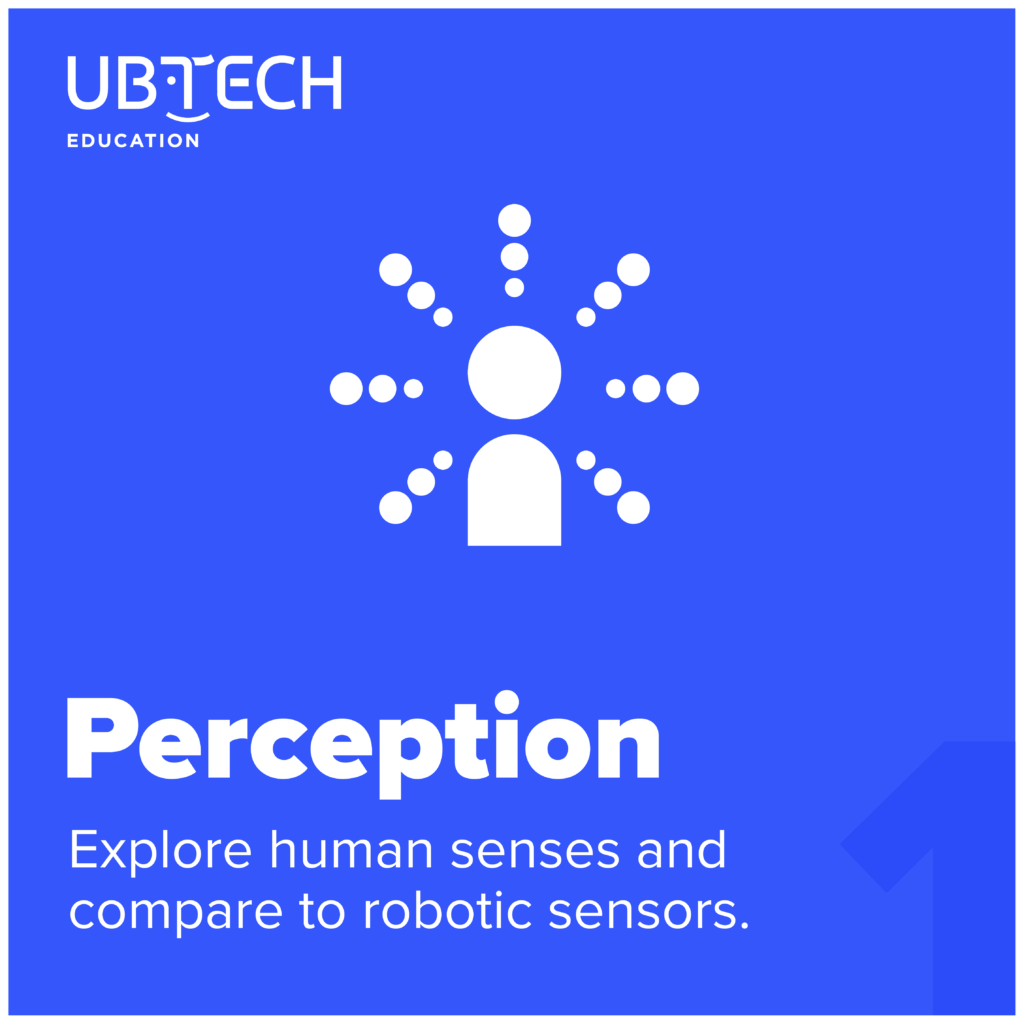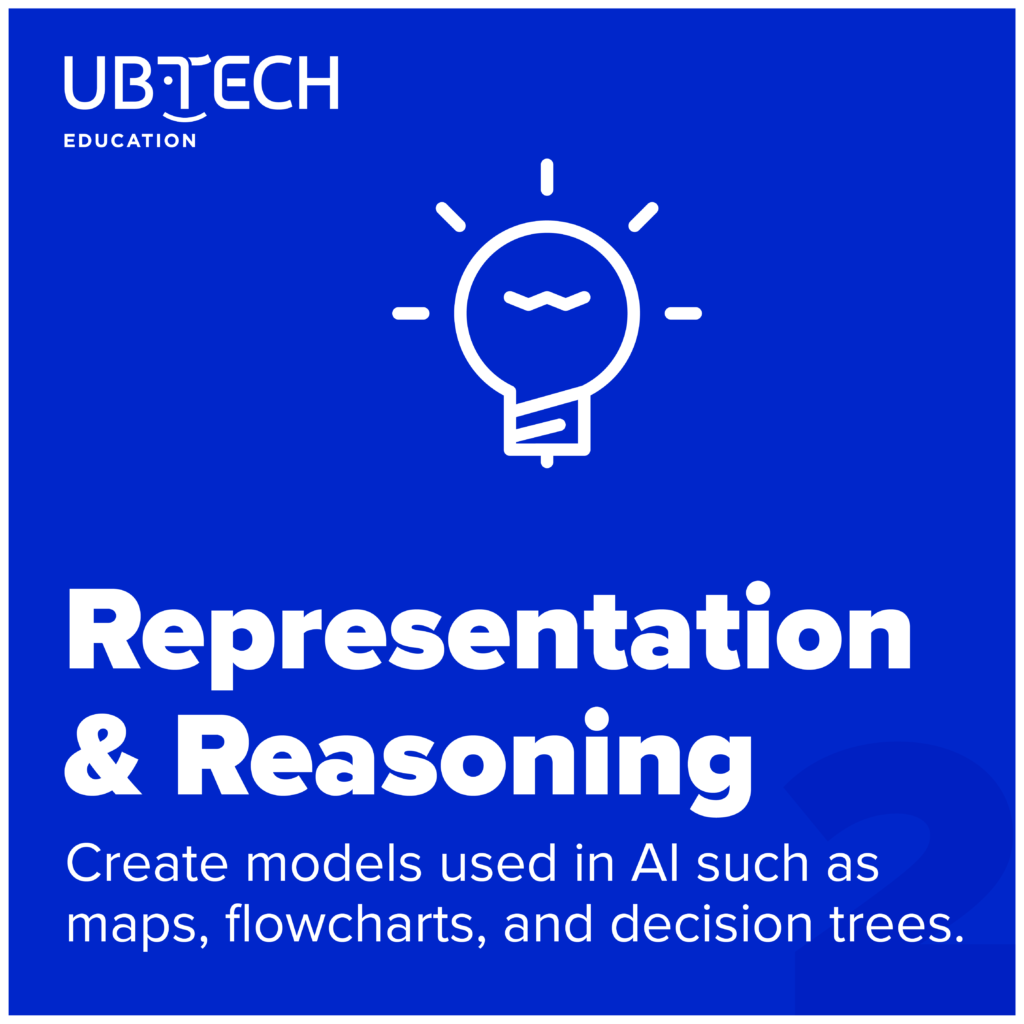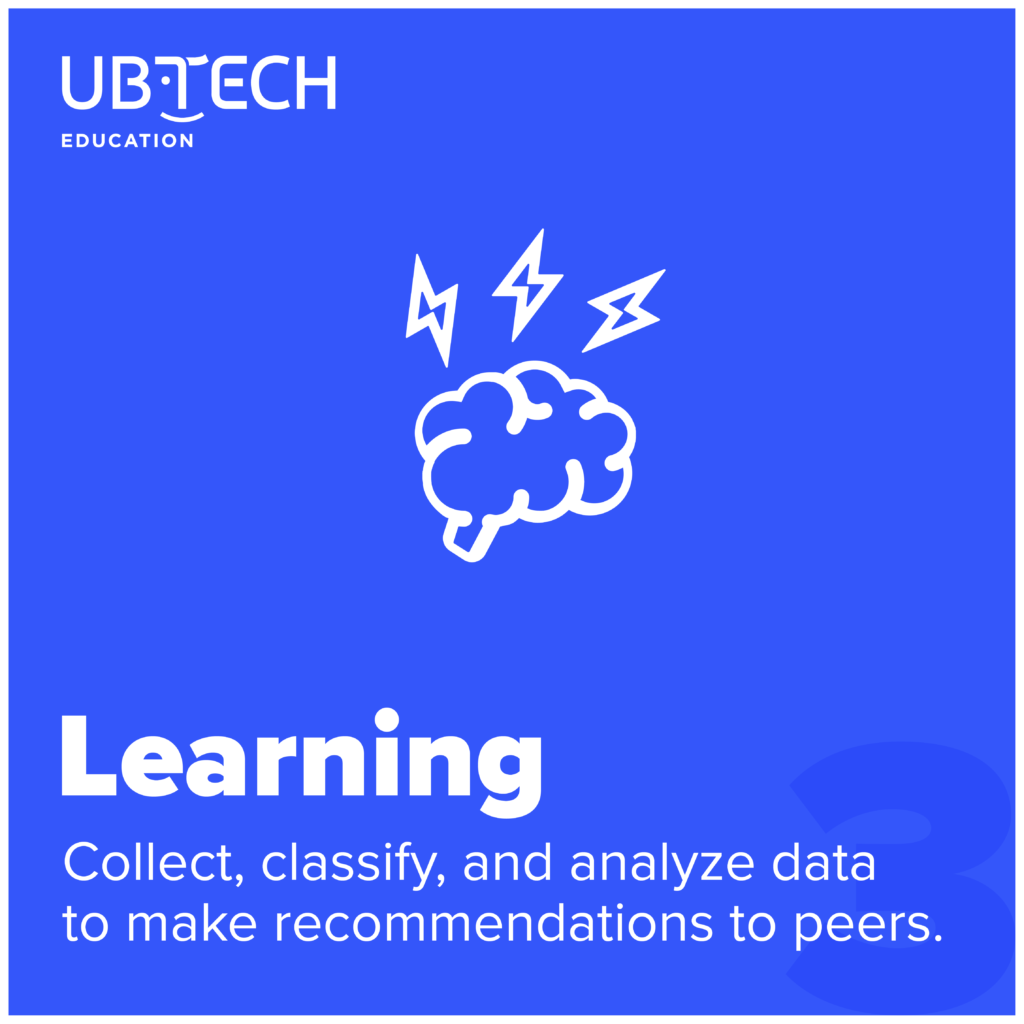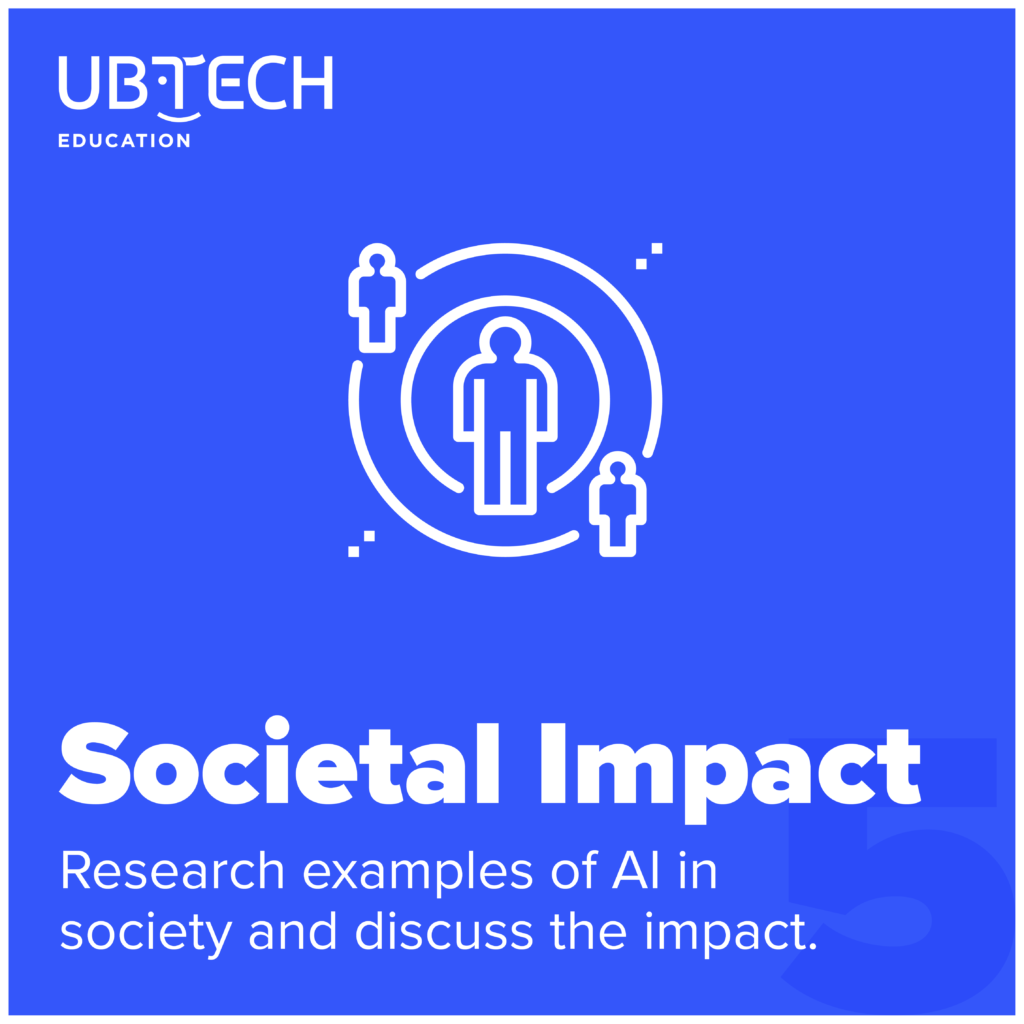The Five Big Ideas in Artificial Intelligence
Artificial intelligence, or AI, refers to a computer system’s ability to perform tasks that typically require human intelligence. Typical examples include visual perception, speech recognition, decision-making, and language translation. AI impacts our daily lives in many ways, from recognizing your face as you open your phone to offering assistance as you shop online. It represents a future limited only by our imagination.
To help students have a better understanding of artificial intelligence and basic computer science concepts, we created our AI Foundations curriculum. Students explore the Five Big Ideas in AI, as developed by AI4K12.org, through hands-on activities, reflective discussions, and the use of free online resources.
Understanding how AI plays an increasingly prominent role in our lives prepares students for a future intertwined with AI. Our curriculum enables students to be able to make informed decisions about how to use AI, as well as understand its impact on society and their own lives.
As an intro into our curriculum, let’s look at the Five Big Ideas.
What are the Five Big Ideas in AI?
Big Idea #1 – Perception

The ability to see, hear, or become aware of something through the senses. Humans are able to better understand the world around them through the use of their senses.
So, how do computers and other intelligent agents perceive the world? Answer: through various sensors and input devices. These devices collect data from the physical world and convert it into a digital form that a computer can process and understand. The data collected by these devices is then interpreted by machine learning algorithms to extract meaningful information and perform actions based on that information. More on machine learning in Big Idea #3.
Big Idea #2 – Representation & Reasoning

Computer representation and reasoning refer to the ways in which computers can process and manipulate information to solve problems and make decisions.
Representation involves encoding information in a form that computers can understand and manipulate, such as binary data, mathematical models, or symbolic logic. Different representation methods are suited to different types of information and problems. Choosing the appropriate representation is a key aspect of designing a successful computer system.
Reasoning refers to the process of drawing conclusions and making decisions based on the information stored in a computer system. There are various forms of reasoning, including inductive, abductive, and deductive. These methods can also be combined to build complex systems that can solve complex problems. In computer systems, reasoning is typically implemented using algorithms, and the quality of the reasoning is determined by the quality of the data and the algorithms used.
Big Idea #3 – Learning

Machine learning refers to how computers are able to learn from data and improve accuracy in performing a task, without being explicitly programmed. This involves building algorithms and models that can identify patterns in data which can then be used to make predictions or decisions.
A common application of computer learning, machine learning uses models that are trained on large sets of examples and continually updates as more data becomes available. There are various types of machine learning, including reinforcement learning, deep learning, and supervised/unsupervised learning.
Big Idea #4 – Natural Interaction

One of the goals of AI is to make interaction with computers more natural. If you have asked Siri or Alexa a question, you have a general idea of how some of what this interaction is like. Each advancement with this technology leads to responses seeming more human than computer.
While this technology has come a long way from where it started, it continues to be a big hurdle for computers and intelligent agents alike as human interaction is complex and varied. Facial expressions, sarcasm, and tone are just a few of the things that make natural interaction so difficult for AI systems to replicate.
Big Idea #5 – Societal Impact

As AI becomes more widespread, there is a growing concern about the ethical implications of its use. This includes the need for AI systems to be transparent and explainable so that their decisions can be understood and trusted. There is also a need to ensure that AI is developed and used in a way that aligns with human values and ethical principles.
Because AI systems are trained using data and algorithms, their behavior is determined by what is created for them to use. This means that the outcomes of AI systems can be biased and unfair if the data used to train them is biased.
__________________________________
The Five Big Ideas in AI provide a well balanced understanding of how AI works, how we interact with AI, and asks important questions about the use of AI in our daily lives. By exploring these ideas through activities and discussions, students develop the ability to be educated and critical about AI.
Interested in learning more about our AI Foundations curriculum or the Five Big Ideas in AI? Register for an account to gain immediate access to samples of our curriculum. You can also learn more about the history of AI and the Five Big Ideas by viewing our Teaching AI in K-12 webinar series.